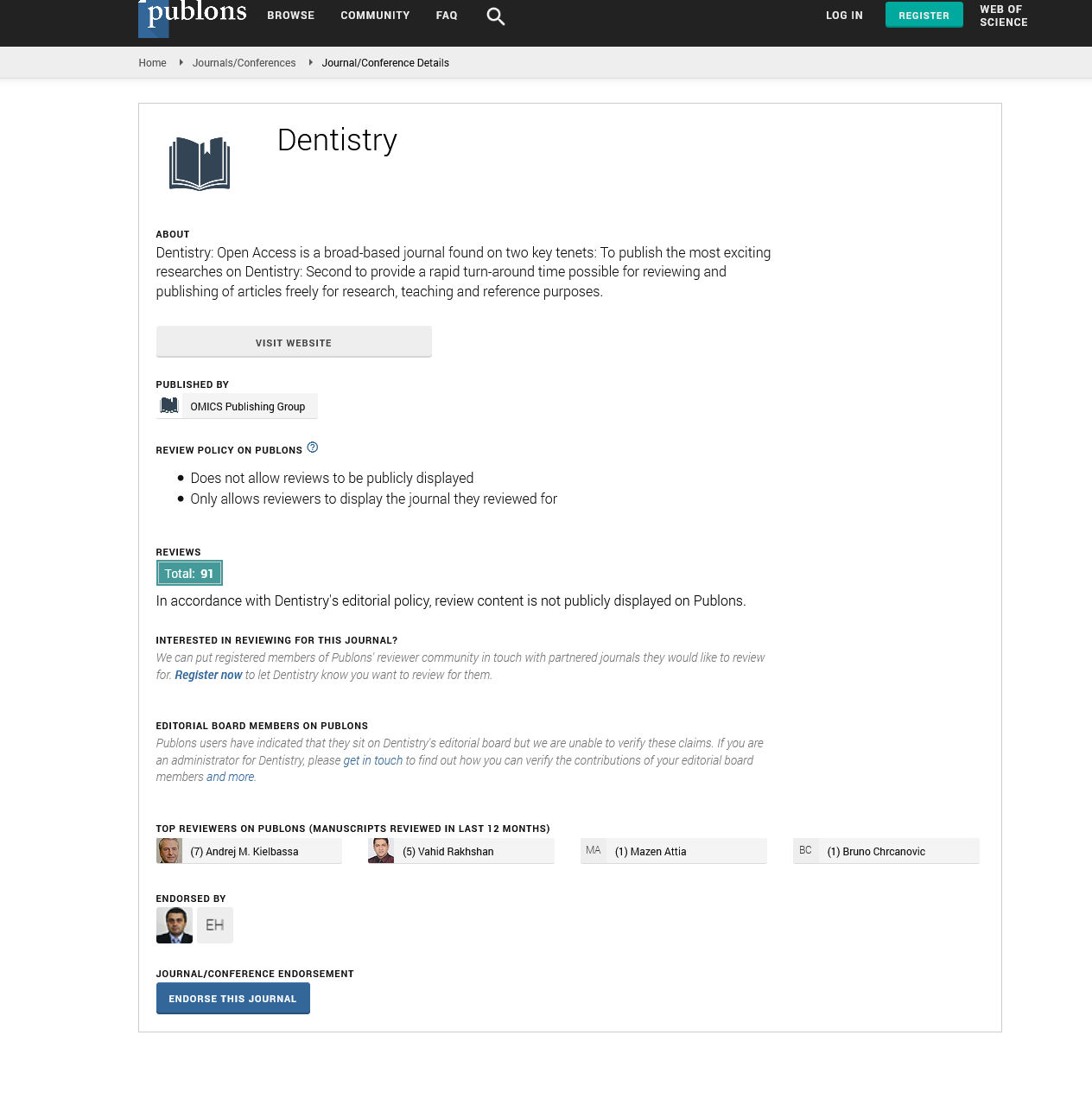Citations : 2345
Dentistry received 2345 citations as per Google Scholar report
Indexed In
- Genamics JournalSeek
- JournalTOCs
- CiteFactor
- Ulrich's Periodicals Directory
- RefSeek
- Hamdard University
- EBSCO A-Z
- Directory of Abstract Indexing for Journals
- OCLC- WorldCat
- Publons
- Geneva Foundation for Medical Education and Research
- Euro Pub
- Google Scholar
Useful Links
Share This Page
Journal Flyer

Open Access Journals
- Agri and Aquaculture
- Biochemistry
- Bioinformatics & Systems Biology
- Business & Management
- Chemistry
- Clinical Sciences
- Engineering
- Food & Nutrition
- General Science
- Genetics & Molecular Biology
- Immunology & Microbiology
- Medical Sciences
- Neuroscience & Psychology
- Nursing & Health Care
- Pharmaceutical Sciences
Journal Highlights
- Advancements in Anesthesia
- Amalgam Fillings
- Anesthesia Case reports
- Anxiety Medicine
- Biology of Cancer
- Bipolar Medicine
- Braces
- CAD/CAM dentistry
- Cosmetic Dentistry
- Dental Anatomy
- Dental Anesthesiology
- Dental Anesthesiology (Anaesthesiology)
- Dental Biomaterials Sciences
- Dental Bridges
- Dental Caries
- Dental Emergency
- Dental Epidemiology
- Dental Lab Management
- Dental Materials Market Analysis
- Dental Radiography
- Dental Traumatology
- Dental Veneers
- Depression Medicine
- Diabetic Medicine
- Digital Dentistry
- Endodontics
- Endosseous
- Epidural anesthetics
- Evolutionary Biology
- Family Dentistry
- Gingivitis
- Human Biology
- Human Teeth
- Immuno Ophthalmology
- Implant Dentistry
- Innovations in Anesthesia
- Journal Membership Progaram
- Laryngeal Mask Airway
- Modern Dentistry
- Mouthguard
- OMFS/OMS
- Ocular Herpes
- Ocular Infection
- Ocular Inflammation
- Ocular Migraines
- Ocular Research
- Ocular Rosacea
- Ocular Trauma
- Ocular Tuberculosis
- Ocular diseases
- Ocular tumors
- Operative Dentistry
- Oral Biology and Dental Diseases
- Oral Microbiology
- Oral Sedation Dentistry
- Oral Surgeons
- Oral and Maxillofacial Surgery
- Orthodontics
- Orthopedic Surgery
- Osseointegration
- Pediatric Surgical Anesthesia
- Pediodonics
- Pedodontics
- Periodontics
- Periodontitis
- Post and Core
- Preventive Dentistry
- Restorative Dentistry
- Shoulder Surgery
- Spinal Surgery
- Stages of anaesthesia
- Surgery and Anesthesia
- Surgical pain
Dental Radiography
Dental radiographs are commonly called X-rays. Dentists use radiographs for many reasons: to find hidden dental structures, malignant or benign masses, bone loss, and cavities.
A radiographic image is formed by a controlled burst of X-ray radiation which penetrates oral structures at different levels, depending on varying anatomical densities, before striking the film or sensor. Teeth appear lighter because less radiation penetrates them to reach the film. Dental caries, infections and other changes in the bone density, and the periodontal ligament, appear darker because X-rays readily penetrate these less dense structures. Dental restorations (fillings, crowns) may appear lighter or darker, depending on the density of the material.

